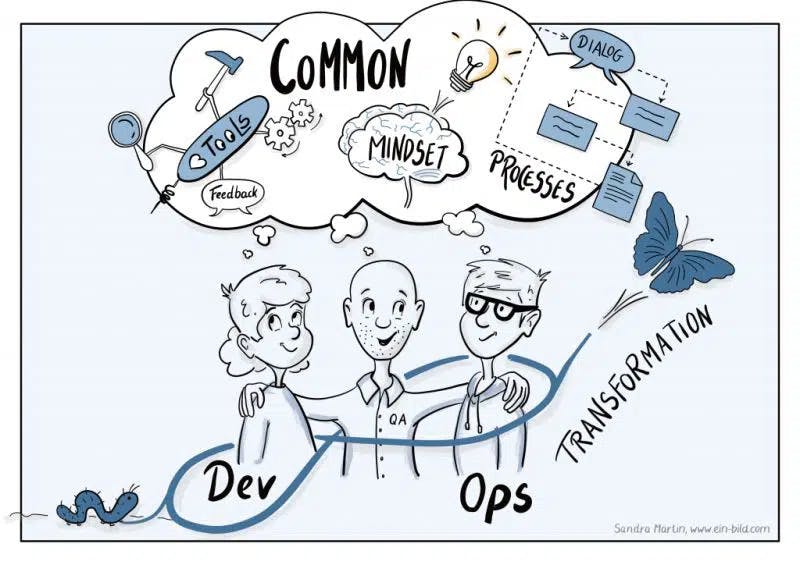DevOps 101: Getting Started as a Beginner
An Introduction to the Principles and Practices of DevOps
I was a software developer who knew little about DevOps until my manager asked me about it. I decided to explore this buzzword and discovered that DevOps was a culture and philosophy that aimed to deliver software faster and with better quality. In this blog, I'll share what I've learned as a beginner in DevOps, including its principles, tools, and practices.
What is DevOps?
As for the current IT market, the DevOps domain is one of the best options for IT folks’ salary and career growth. Many people argue (including me) that there is nothing like a “DevOps Engineer” or a “DevOps Team” because it is not a thing. However, everyone in the industry has now gotten used to the term “DevOps engineer, ” and as long as you understand the DevOps philosophy, these titles don’t matter much.
There are many misconceptions about what DevOps means. One such misconception is “Automation is DevOps.” Developing skills related to infrastructure automation is not enough to become a DevOps Engineer.
Wikipedia says,
DevOps (a clipped compound of development and operations) is a culture, movement or practice that emphasizes the collaboration and communication of both software developers and other information-technology (IT) professionals while automating the process of software delivery and infrastructure changes.
From the above definition, it is clear that DevOps is not about any tools or technologies. DevOps is a cultural movement and a set of practices that aim to bring different IT teams (Developers, Platforms teams, QA, Performance, etc) together to achieve faster and more reliable software delivery.
What is DevOps Culture?
DevOps is a cultural shift. Full stop. It’s not a matter of simply adopting agile planning or automated testing or continuous delivery, although those practices are certainly important. DevOps culture is all about a shared understanding between developers and operations, and sharing responsibility for the software they build. That means increasing transparency, communication, and collaboration across development, IT/operations, and "the business".
Organizations trying to practice DevOps culture require people with collaborative skills who are willing to change and adopt new technologies & methodologies. They are DevOps Engineers.
It is all about different teams working together towards a common goal. In other words, there should not be any blaming culture between different IT teams.
The following image says it all :

For example, If you are a DevOps engineer, never say “It’s not my job”, say, “Let me see what I can do to help.” How you respond has a significant impact on collaboration. (It doesn’t mean you have to spoon-feed people and do others’ work.)
IT leaders should make sure the team is trained on DevOps culture before using DevOps tools. This prevents confusion and avoids having separate “DevOps Teams” that can lead to a siloed structure.
Why DevOps came into Existence?
DevOps came into existence to address the challenges that arose as software development and IT operations become increasingly complex and interdependent. In traditional software development models, development and operations were separate functions, with each team working in silos and with different goals, processes, and tools. This approach often led to long development cycles, delays in releases, and communication gaps between the teams.
DevOps emerged as a response to these challenges, to break down the silos between development and operations teams and promote collaboration, automation, and continuous feedback. The DevOps approach emphasizes the importance of communication, collaboration, and shared ownership of the entire software development lifecycle, from planning and development to deployment and maintenance.
By adopting DevOps practices and tools, organizations can achieve faster and more frequent releases, higher quality software, better collaboration between teams, and more efficient use of resources. The rise of cloud computing and the need for organizations to deliver software quickly and reliably have also contributed to the growing popularity of DevOps.
Silos: A "silo" refers to a situation where different groups or departments within an organization operate independently and with minimal communication or collaboration with each other. Silos can create barriers to information sharing, knowledge transfer, and teamwork, which can lead to inefficiencies, misunderstandings, and missed opportunities.
In the context of software development, silos can exist between development and operations teams, where each team works in isolation and has its tools, processes, and objectives. This can result in delays, mistakes, and communication breakdowns when changes are made to software or systems. The DevOps approach aims to break down these silos and promote collaboration and communication between development and operations teams, to achieve more efficient and effective software delivery.
In the next blog post, we'll delve into the various software development models and explore why the DevOps approach has become essential for organizations looking to stay competitive in today's fast-paced digital landscape.
If you found this blog informative, please show your support by dropping ❤️and sharing it with your friends. 🙌🏼 I would also love to hear your feedback and suggestions for future topics, so feel free to drop a comment and let me know how I can improve. 🤗

